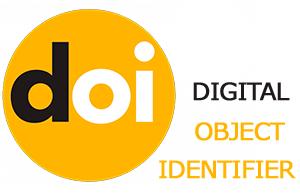BIM-TECHNOLOGIES: A NEW STANDARD FOR COST OPTIMIZATION IN CONSTRUCTION
DOI:
https://doi.org/10.32689/2523-4536/78-21Keywords:
innovations in construction, BIM (Building Information Modeling), LCC (Life Cycle Costing), cost optimization, digital models, Internet of things (IoT), architectural designAbstract
The modern construction industry is constantly seeking innovative solutions to enhance process efficiency, reduce costs, and ensure high-quality end products. One of the most revolutionary advancements in this field is BIM (Building Information Modeling)–a methodology for creating and managing digital models of buildings throughout their entire lifecycle. BIM technologies introduce a new approach to designing, constructing, and operating facilities, replacing outdated paper-based documentation with interactive digital models. This not only reduces time and material expenses but also minimizes errors, improves coordination among project participants, and enhances transparency in project management. The primary advantage of BIM lies in the creation of a single, integrated model containing all necessary information about a building–from drawings and specifications to detailed construction schedules. Every project participant, from architects to contractors, has access to up-to-date data, which significantly simplifies decision-making and reduces the risk of errors caused by inconsistent information. BIM implementation also transforms the approach to facility operation. The data accumulated in the digital model can be utilized for monitoring the building's condition, planning maintenance, and managing the facility throughout its lifecycle. This ensures long-term cost savings and enables asset owners to make more informed decisions. Moreover, BIM contributes to sustainable construction practices. By enabling detailed analyses during the design phase, it allows for resource optimization, assessment of a building's energy efficiency, and a reduction in its carbon footprint. In today’s context, where the construction industry is one of the largest energy consumers and sources of CO2 emissions, this aspect is particularly critical. However, implementing BIM technologies requires significant changes in organizational structure and project management approaches. Investments in staff training, process adaptation, and specialized software are necessary. At the same time, these costs are quickly offset by the increased efficiency and reduced expenses in construction and operations. In conclusion, BIM technologies serve as a powerful tool for cost optimization and the introduction of sustainable innovations in construction. Their potential not only boosts the competitiveness of companies but also makes a substantial contribution to the development of an environmentally conscious and efficient construction industry.
References
Santos, J. R., & Pereira, M. R. (2023). The Impact of Building Information Modeling (BIM) on Construction Project Performance: A Systematic Review of Recent Literature. International Journal of Project Management, no. 41(1), pp. 56–70.
Gerges, M., & Shaban, K. (2020). The Role of BIM in the Digital Transformation of Construction: From Design to Operations. Automation in Construction, no. 118.
Eastman, C., et al. (2011). BIM Handbook: A Guide to Building Information Modeling for Owners, Managers, Designers, Engineers, and Contractors.
Zhang, H., & Zhang, J. (2024). A Novel Framework for Integrating BIM and IoT in Smart Construction Management. Journal of Construction Engineering and Management, no. 150(2).
Vasilenko, A., & Smirnov, S. (2022). Integration of Building Information Modeling (BIM) with Augmented Reality (AR) in the Construction Industry: Opportunities and Challenges. Automation in Construction, no. 130.
Volk, R., et al. (2014). Building Information Modeling (BIM) for existing buildings–Literature review and future needs.
Jalaei, F., & Jrade, A. (2021). Building Information Modeling (BIM) for Sustainability in the Construction Industry: A Review and Future Research Directions. Journal of Cleaner Production, no. 298.
RICS (2018). International BIM Implementation Guide.
BuildingSMART International. (2020). International BIM Standards and Guidelines.
Serrano, C., García-Sánchez, I. M., & Ríos, A. (2019). The Role of BIM in the Construction Industry: A Systematic Review and Future Perspectives. Journal of Civil Engineering and Management, no. 25(4), pp. 355–367.









